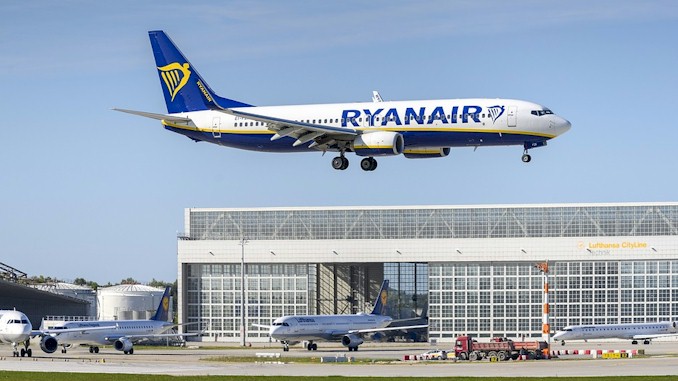Travel Like a Pro: Long-Haul Flight Hacks
I’ve been on lots of long-haul flights, and it is not a great feeling. When I was little, I always hated long flights and found myself very uncomfortable and quite bored. It can be an irritating problem since I love traveling to faraway places. However, over the years, I learned some great tips on surviving a long flight. They are:
Surviving a long-haul flight requires careful planning and preparation. To begin with, choose the right seat for maximum comfort and ease of movement. Wear comfortable clothing and pack essential items such as earplugs, a neck pillow, and eye mask. Stay hydrated by drinking plenty of water and avoid alcohol and caffeine. Move around the cabin regularly to prevent blood clots and deep vein thrombosis. Lastly, entertain yourself with books, movies, or music and get some rest to combat jet lag. By following these simple steps, you can make your long-haul flight a comfortable and enjoyable experience.
These tips are just the beginning of what I have to offer when it comes to surviving a long-haul flight. In the following sections, I will dive deeper into each of these points and provide additional insider advice on how to stay comfortable, entertained, and well-rested during your journey. From tips on what to eat and drink to the best ways to pass the time, I have everything you need to make your next long-haul flight a breeze. So, keep reading to learn more and become a pro at long-haul flight survival!
Choosing the Best Seat for Maximum Comfort
I understand the importance of choosing the right seat to ensure a comfortable journey. With so many factors to consider, it can be overwhelming to know where to begin.
The first step is to consider the type of plane you’ll be flying on. Different planes have different seat configurations and amenities, and some offer more legroom than others. For example, some airlines use wide-body planes like the Airbus A380 or Boeing 787 Dreamliner, which typically have more space and amenities like personal entertainment screens, while others use narrow-body planes like the Boeing 737 or Airbus A320, which tend to be more cramped and offer fewer amenities.
To determine which type of plane you’ll be flying on, check the airline’s website or seat map tool, or use a third-party website like SeatGuru to get more information about the seat layout, legroom, and amenities of the specific flight you’re considering. This can help you choose a seat that offers the most comfort for your needs.
Once you’ve determined the type of plane you’ll be flying on, it’s time to consider the specific seat options. One important factor to consider is the amount of legroom. Some airlines offer seats with extra legroom, often referred to as “economy plus” or “premium economy” seats. These seats can provide additional space to stretch out and may also come with other amenities like priority boarding, dedicated overhead bin space, or in-seat power outlets.
Another factor to consider is the location of the seat. Do you prefer a window seat for a view, or an aisle seat for easy access to the bathroom and stretching your legs? Keep in mind that seats near the back of the plane tend to experience more turbulence, while seats near the front tend to have less engine noise.
If you’re looking for even more comfort, consider upgrading to premium economy or business class. These seats offer more space, recline further back, and may even come with additional amenities like a footrest or in-flight entertainment. However, keep in mind that these seats come with a higher price tag and may not be within everyone’s budget.
It’s also important to be aware of any seat restrictions or fees. Some airlines charge extra for certain seat selections, while others restrict certain seats for passengers with disabilities or those traveling with infants. Make sure to check with your airline or travel agent about any seat restrictions or fees before making your seat selection.
Choosing the best seat for your needs on a long-haul flight requires careful consideration of the plane type, seat options, and amenities offered. By taking the time to research and choose the right seat, you can maximize your comfort and ensure a more enjoyable journey.
Packing the Essentials: What to Bring on a Long-Haul Flight
When it comes to packing for a long-haul flight, it’s important to strike a balance between bringing the essentials and avoiding overpacking. As someone who has been on many long flights, I have honed my packing list to ensure maximum comfort and convenience.
First and foremost, consider your in-flight entertainment options. While most airlines offer in-flight movies and TV shows, it’s always a good idea to bring your own entertainment. Whether it’s a book, e-reader, or tablet, having something to keep you occupied during the flight can make all the difference. Don’t forget to bring headphones or earbuds, as well.
Comfort is also key when it comes to packing for a long flight. Bring a neck pillow or travel pillow to help you sleep more comfortably, as well as a warm, comfortable blanket or scarf to stay cozy. Compression socks can also help improve circulation and reduce swelling during long periods of sitting.
Another essential item to pack is a toiletry kit. While most airlines provide basic amenities like toothpaste and a toothbrush, having your own kit with items like moisturizer, lip balm, and face wipes can help you feel refreshed and rejuvenated during the flight. Don’t forget to pack any necessary medications as well.
It’s also important to stay hydrated during a long flight, as the dry air in the cabin can cause dehydration. Bring a refillable water bottle to fill up after passing through security, as well as some hydrating snacks like fresh fruit or granola bars.
If you’re planning to sleep during the flight, consider packing some sleep aids like melatonin or lavender oil to help you relax and fall asleep more easily. And for those who have trouble sleeping on planes, noise-canceling headphones or earplugs can be a game-changer.
Finally, don’t forget to bring any necessary travel documents, like your passport or visa, as well as a backup power bank or charger for your electronics.
By packing these essentials and considering your own personal comfort and entertainment needs, you can make a long-haul flight feel much more manageable and enjoyable.
Staying Hydrated and Nourished: Eating and Drinking on a Long-Haul Flight
One of the biggest challenges of a long-haul flight is staying hydrated and nourished. The dry air in the cabin, coupled with limited food and beverage options, can leave you feeling dehydrated and hungry. However, there are a few things you can do to ensure you stay properly nourished and hydrated during your flight.
Remember to drink plenty of water. Aim to drink at least 8 ounces of water for every hour you’re in the air. Bring a refillable water bottle with you to fill up after passing through security, and ask the flight attendants for water whenever you need it. Avoid alcohol, caffeine, and sugary drinks, as they can contribute to dehydration.
When it comes to food, many airlines offer meal options, but they may not always meet your dietary needs or preferences. Consider bringing your own snacks or meals, like fruit, granola bars, or a sandwich. This can also help you avoid the long lines and wait times for in-flight meals.
If you do opt for the in-flight meal, choose options that are nutrient-dense and low in sodium and sugar. Avoid foods that are high in fat or fried, as they can make you feel sluggish and uncomfortable. Opt for fresh fruits and vegetables, lean protein, and complex carbohydrates like whole grains.
Some airlines offer snack stations or bars where you can grab a snack or drink at your convenience. Take advantage of these options to keep your energy levels up throughout the flight.
Don’t forget to stretch your legs and move around periodically throughout the flight. This can help improve circulation and prevent stiffness and discomfort. Try doing some simple stretches in your seat or take a walk up and down the aisle when it’s safe to do so.
Staying properly hydrated and nourished during your long-haul flight can help you arrive at your destination feeling refreshed and energized. With a little bit of preparation and planning, you can ensure that you have the sustenance you need to make the most of your journey.
Keeping Active and Comfortable: Stretching and Exercise on a Long-Haul Flight
Long-haul flights can be uncomfortable, especially when you’re confined to a small seat for an extended period of time. However, there are ways to keep active and comfortable during your flight. One effective way is through stretching and exercise.
Simple stretches can help improve circulation and reduce muscle stiffness and discomfort. You can do some stretching in your seat, like rolling your shoulders or doing ankle rotations. Additionally, you can take a short walk up and down the aisle when it’s safe to do so. This can help improve blood flow.
Another option is to do some seated exercises. You can do leg lifts, foot pumps, or even try some yoga poses in your seat. This can help keep your muscles engaged and prevent cramping.
Some airlines offer in-flight exercises and stretching programs that you can follow along with. These programs can include everything from simple stretches to more advanced yoga poses. If your airline doesn’t offer these programs, consider bringing your own exercise routine or following along with a video on your phone or tablet.
In addition to stretching and exercise, there are other ways to stay comfortable during your flight. One of the simplest ways is to wear comfortable clothing, like loose-fitting pants and breathable tops. You can also bring a neck pillow or eye mask to help you relax and get some rest.
Another way to stay comfortable is to bring your own entertainment. This can include books, movies, or games on your phone or tablet. By keeping yourself entertained, you can help pass the time and make the flight more enjoyable.
Lastly, don’t be afraid to ask the flight attendants for help. They may be able to provide you with extra pillows or blankets to help you get more comfortable. They may also be able to suggest some in-flight exercises or stretches to help you stay active and comfortable.
Entertaining Yourself and Beating Jet Lag: Tips for Rest and Relaxation
Long-haul flights can be exhausting, both physically and mentally. One of the biggest challenges is beating jet lag, which can disrupt your sleep patterns and leave you feeling groggy and disoriented. However, there are ways to entertain yourself and beat jet lag, so you arrive at your destination feeling rested and refreshed.
One way to beat jet lag is to adjust your sleep schedule before your flight. This can help your body acclimate to the new time zone before you even leave. Additionally, try to get as much sleep as possible during your flight, especially if you’ll be arriving at your destination in the morning. Use an eye mask, earplugs, or noise-cancelling headphones to block out distractions and create a more restful environment.
Another way to entertain yourself and beat jet lag is to bring your own entertainment. This can include books, magazines, movies, or games on your phone or tablet. Some airlines offer in-flight entertainment, but it’s always a good idea to have your own options in case the selection is limited or not to your liking.
If you have trouble sleeping on planes, consider bringing your own sleep aids, like melatonin or herbal teas. Additionally, try to avoid caffeine and alcohol, which can disrupt your sleep patterns and leave you feeling even more tired.
Once you arrive at your destination, try to adjust to the new time zone as quickly as possible. Get outside in the sunlight to help regulate your circadian rhythms, and try to stay awake until your normal bedtime in the new time zone. This can help you avoid jet lag and adjust to your new surroundings more quickly.
Finally, don’t forget to take breaks and rest during your trip. Travel can be exhausting, so make sure to schedule in some downtime to relax and recharge. This can include taking a nap, visiting a spa, or simply lounging by the pool.







